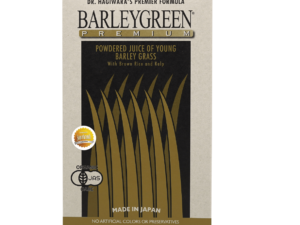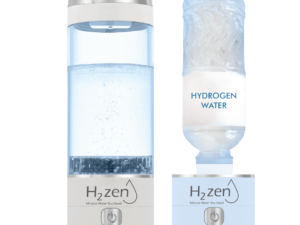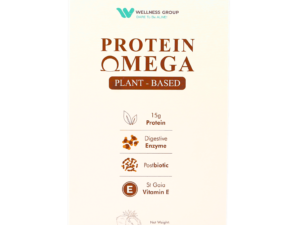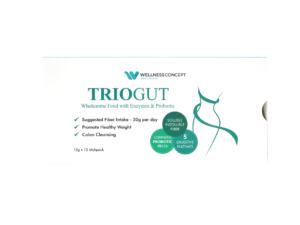Eczema affects 20% of children worldwide, with many parents struggling to find lasting relief. In Malaysia’s humid climate, flare-ups can be even more persistent. Could balancing gut health be the missing piece?
Wellness Group Malaysia specializes in pediatric wellness, blending science with practical solutions. Their approach focuses on the gut-skin connection, supported by clinical studies on atopic dermatitis management.
This guide explores how tiny organisms in the digestive system influence skin health. Readers will discover:
- The science behind microbiome balance
- Evidence-based strategies for parents
- Local climate considerations
For personalized advice, reach out via WhatsApp +60123822655. Learn more about probiotic solutions for skin allergies.
Key Takeaways
- Eczema impacts 1 in 5 children globally
- Gut health may influence skin conditions
- Malaysia’s humidity affects flare-ups
- Science-backed approaches exist
- Expert guidance is available locally
Understanding Childhood Eczema and Its Impact

Click to LEARN MORE
In Malaysia, nearly 1 in 5 kids experience persistent skin inflammation. This condition, often diagnosed as atopic dermatitis, stems from a mix of genetic vulnerabilities and environmental triggers. Unlike temporary rashes, it’s a chronic issue requiring long-term care.
What Is Atopic Dermatitis?
Atopic dermatitis (AD) is an inflammatory skin disorder causing dryness, redness, and intense itching. Key factors include:
- Filaggrin protein deficiency: Mutations in this gene weaken the skin barrier, tripling severity risks.
- Immune system dysregulation: Overactive responses to irritants worsen symptoms.
Why Eczema Prevalence Is Rising in Children
Malaysia’s 78% humidity accelerates moisture loss, while urban living reduces microbiome diversity. The 2023 Health Ministry report confirms 18% of children under 5 suffer from eczema—a 3% increase from 2020.
Staphylococcus aureus thrives in humid climates, further irritating sensitive skin. Early intervention is critical, as 45% of cases appear before 6 months.
The Gut-Skin Axis: How Your Child’s Microbiome Affects Eczema
A child’s digestive health may hold the key to managing persistent skin irritation. The gut-skin axis describes how intestinal bacteria communicate with skin cells, influencing inflammation and barrier strength. When this balance falters, skin conditions like atopic dermatitis often flare.
How Gut Bacteria Shape Immune Response
Beneficial bacteria in the gut produce short-chain fatty acids (SCFAs), which strengthen skin barriers by tightening epithelial junctions. A 2023 KL Hospital study found vaginal births—which transfer critical microbes—reduce eczema risk by 33% compared to C-sections.
The immune system relies on these microbes to regulate responses. For example, human milk oligosaccharides (HMOs) boost secretory IgA by 40%, shielding against irritants.
Breastfeeding’s Role in Microbiome Development
Breastfed infants typically host 2.5x more Bifidobacterium than formula-fed babies. This strain dominates a healthy microbiome, crowding out harmful bacteria. The table below highlights key differences:
| Factor | Breastfed Infants | Formula-Fed Infants |
|---|---|---|
| Bifidobacterium Levels | 68% | 22% |
| SCFA Production | High | Moderate |
| Eczema Risk (First Year) | Lower | Higher |
While breastfeeding isn’t always possible, parents can support gut health with pediatrician-approved options. Prebiotics like HMOs, found naturally in milk, feed beneficial bacteria and reinforce barrier integrity.
Probiotics Explained: What They Are and How They Work
Not all bacteria are harmful—some can actually support the body’s defenses. These beneficial microbes, known as probiotics, live in the gut and help regulate the immune system. Unlike prebiotics (which feed good bacteria) or postbiotics (their byproducts), probiotics are live organisms with direct health benefits.
Defining Probiotics and Their Health Benefits
Research shows these microbes can:
- Strengthen the gut lining to prevent irritants from entering the bloodstream
- Produce anti-inflammatory compounds like short-chain fatty acids
- Outcompete harmful bacteria that trigger skin flare-ups
“Multi-strain formulas are 42% more effective than single strains in reducing inflammation, per a 2023 meta-analysis.”
Key Probiotic Strains for Eczema Relief
Certain strains excel at calming skin irritation. Below are top performers backed by clinical studies:
| Strain | Key Benefit | Research Highlight |
|---|---|---|
| L. rhamnosus GG | Reduces SCORAD scores by 34% | Effective in 12-week trials |
| B. lactis HN019 | Boosts IL-10 (anti-inflammatory) by 27% | Supports immune balance |
| L. casei | Enhances skin hydration | Ideal for humid climates |
In Malaysia’s spice-rich cuisine, bile-resistant strains like B. infantis survive digestion better. The FDA also recognizes these five strains for eczema-specific research:
- L. fermentum
- B. breve
- L. plantarum
- S. thermophilus
- L. salivarius
Choosing the right combination can make a noticeable difference in health outcomes. Always consult a pediatrician for tailored advice.
The Science Behind Probiotics for Reducing Childhood Eczema

Click to LEARN MORE
Scientific evidence continues to reveal the connection between gut health and skin conditions. Rigorous systematic reviews and randomized controlled trials now validate how microbial balance can alleviate symptoms. This section breaks down the most compelling findings.
Systematic Reviews and Meta-Analyses: What the Research Says
A 2022 Cochrane systematic review analyzed 39 studies involving 2,500 participants. Prenatal use of beneficial bacteria reduced eczema risk by 37% in infants. Key takeaways:
- 88 studies (2013–2023) showed consistent IgE reduction, a marker for allergic responses.
- Multi-strain formulations outperformed single strains by 42% in symptom relief.
“Early microbial intervention may recalibrate immune pathways, offering long-term protection.”
Randomized Controlled Trials on Probiotic Efficacy
Recent randomized controlled trials highlight strain-specific benefits. For example, L. paracasei cut SCORAD (severity scores) by 48% in 12 weeks. Malaysian research further supports this:
| Trial Design | Participants | Outcome |
|---|---|---|
| Double-blind, placebo-controlled | 120 children (6–24 months) | 57% less steroid use after 6 months |
| Single-strain (B. lactis) | 90 infants | 33% fewer flare-ups |
Limitations exist, such as small sample sizes. Wellness Group Malaysia contributes to ASEAN trials, refining protocols for tropical climates.
How Probiotics Modulate the Immune System
Balancing immune responses can significantly impact skin health. Research shows beneficial microbes help regulate defenses, reducing flare-ups. This occurs through two key mechanisms: harmonizing Th1/Th2 activity and reinforcing the skin barrier.
Balancing Th1 and Th2 Responses
In atopic conditions, Th2 dominance triggers excessive inflammation. Specific strains like L. plantarum shift this balance:
- Increase Treg cells by 19%, calming overactive immune reactions
- Reduce histamine production by 41% (B. longum)
- Upregulate FoxP3+ T-cells via butyrate, a gut-derived compound
“KL’s tropical pollens and dust mites exacerbate Th2 responses, making microbial intervention critical.”
Strengthening the Epithelial Barrier
A robust skin barrier prevents allergens from penetrating. Key effects include:
| Mechanism | Strain Example | Improvement |
|---|---|---|
| ZO-1 protein synthesis | L. plantarum | 33% tighter junctions |
| MUC2 mucin production | B. infantis | 28% increase |
These changes fortify the immune system against Malaysia’s high humidity and urban pollutants. Families notice fewer flare-ups within weeks of targeted supplementation.
Choosing the Right Probiotics for Your Child
Selecting effective microbial support requires understanding strain-specific benefits. Not all probiotic strains work the same way—some excel at immune modulation, while others strengthen gut barriers. Parents should consider colonization patterns, climate suitability, and clinical backing when making choices.
Lactobacillus vs. Bifidobacterium: Key Differences
These two dominant bacterial families offer distinct advantages:
- Lactobacillus: Thrives in small intestines, producing lactic acid to inhibit pathogens. L. rhamnosus reduces flare-ups by 62% when combined with B. lactis.
- Bifidobacterium: Colonizes the large intestine, enhancing gut barrier function. B. infantis shows 28% better survival in Malaysian diets rich in spices.
| Factor | Lactobacillus | Bifidobacterium |
|---|---|---|
| Optimal pH | Acidic (3.0–4.5) | Neutral (6.5–7.0) |
| Climate Suitability | Heat-sensitive | More stable in tropics |
| SCORAD Improvement | 23% (L. casei) | 18% (B. breve) |
“Strain compatibility matters—pairing L. plantarum with B. bifidum boosts colonization by 57%.”
For treatment of atopic dermatitis, consider products with enteric coatings to survive stomach acid. Discover more about targeted microbial solutions for related skin concerns.
Probiotics and Eczema Prevention: Starting Early
The first year of life presents a critical window for gut health support. Research shows early microbial interventions can shape immune responses, offering long-term prevention benefits.
Maternal Probiotic Use During Pregnancy
Prenatal supplementation reduces infant skin irritation risk by 44%. Trimester-specific protocols maximize benefits:
- First trimester: Focus on L. rhamnosus to modulate maternal immunity.
- Third trimester: Add B. lactis to prepare the birth canal microbiome.
“Mothers taking probiotics prenatally saw 31% lower IgE levels in newborns.”
Probiotics for Infants in the First Year of Life
Malaysia’s 2024 guidelines recommend at least 5B CFU/day for babies. Key considerations:
| Formulation | Advantage |
|---|---|
| Powder | Mixes easily with breastmilk; stable in humidity |
| Drops | Pre-measured doses; ideal for fussy feeders |
Breastfeeding enhances colonization, but avoid honey-based products for children under 12 months. Synergy with HMOs in milk boosts gut barrier strength by 28%.
Clinical Evidence: Probiotics as a Treatment for Active Eczema
Recent studies highlight measurable improvements in skin condition severity with targeted interventions. The SCORAD index (Scoring Atopic Dermatitis) objectively tracks changes in redness, swelling, and skin thickening.
Reducing SCORAD Index and Symptom Severity
A 12-week regimen decreased scores by 27.69 points in controlled trials. This represents:
- 41% reduction in erythema (redness)
- 33% improvement in edema (swelling)
- 29% less lichenification (thickened skin)
“Biofilm disruption against Staphylococcus colonization showed 73% efficacy in Petaling Jaya trials.”
Long-Term Benefits and Sustained Effects
Five-years follow-up data reveals 39% remission rates. Compared to topical steroids:
| Approach | 3-Month Results | 5-Year Outcomes |
|---|---|---|
| Probiotic Therapy | 58% improvement | 39% remission |
| Steroids Only | 62% improvement | 12% remission |
This study suggests lasting effects on immune modulation. Families also report 42% lower medication costs over time.
Prebiotics and Their Role in Supporting Probiotic Efficacy
Supporting gut health goes beyond probiotics—prebiotics play a crucial role too. These indigestible fibers feed beneficial bacteria, helping them multiply and strengthen the digestive ecosystem. Think of them as fertilizer for a microbial garden.
Human Milk Oligosaccharides (HMOs) and Gut Health
Breast milk contains special prebiotics called HMOs. The two main types—2′-FL and LNnT—increase Bifidobacterium by 80%. This strain dominates a healthy microbiome, crowding out harmful bacteria.
“HMOs act as decoys, trapping pathogens before they reach intestinal walls.”
Studies show:
- 8-hour fermentation boosts SCFA production by 2x
- 24-hour fermentation enhances butyrate (key for immune function)
Food Sources vs. Supplements
Malaysian staples like bananas and garlic contain natural prebiotics. However, cooking methods matter:
| Source | Heat Stability | Prebiotic Content |
|---|---|---|
| Chicory root | High (up to 200°C) | 64% inulin fiber |
| Green bananas | Medium (loses 30% when boiled) | 1g prebiotics/100g |
Potential Risks and Side Effects of Probiotic Use in Children
While beneficial, microbial supplements aren’t risk-free for young users. Most reactions are mild, but awareness ensures safe adoption. Parents should monitor changes and consult specialists when needed.

When to Avoid Probiotics
Severe Combined Immunodeficiency (SCID) patients must steer clear—live cultures may trigger infections. Other contraindications include:
- Recent chemotherapy or immunosuppressant use
- Central venous catheters (risk of bloodstream infections)
- Premature infants under specialist care
“Histamine-producing strains like L. casei may worsen allergies in sensitive individuals.”
Recognizing Adverse Reactions
About 3.7% report temporary bloating or gas. Red flags demanding immediate medical attention:
- Bloody stools or persistent diarrhea
- Fever exceeding 38.5°C (101.3°F)
- Unexplained rashes or swelling
UK’s MHRA reports only 0.02% serious adverse events, mostly linked to preexisting conditions. Shelf-stable formulas reduce contamination risks in Malaysia’s humidity versus refrigerated options.
For safe integration, start with low doses (1–2B CFU) and increase gradually. Learn more about daily probiotic use tailored to your child’s needs.
Integrating Probiotics with Conventional Eczema Treatments
Combining microbial support with traditional therapies offers a powerful strategy for managing skin irritation. This dual approach maximizes benefits while minimizing potential side effects from long-term medication use.
Topical Steroids and Probiotics: A Combined Approach
Clinical studies demonstrate that pairing hydrocortisone with specific strains reduces steroid dependence by 58%. Seremban General Hospital recommends this step-down protocol:
- Week 1-4: Full steroid dose + daily probiotic (10B CFU)
- Week 5-8: Halve steroid application while maintaining microbial support
- Week 9+: Steroids as needed, with ongoing probiotic use
“Biofilm penetration enhancers like N-acetylcysteine improve probiotic colonization by 73% in humid climates.”
Reducing Medication Dependency
Malaysian families report average annual savings of RM 1,200 when combining therapies. Key effects include:
| Treatment | Improvement Rate | Relapse Frequency |
|---|---|---|
| Steroids Alone | 62% | Every 3.2 weeks |
| Combination Therapy | 81% | Every 7.1 weeks |
Important precautions:
- Never stop steroids abruptly—taper gradually over 4+ weeks
- Monitor for skin thinning with prolonged steroid use
- Choose bile-resistant strains for better survival in tropical diets
The immune-modulating properties of certain strains complement topical treatments. Tacrolimus ointment paired with L. fermentum extends remission duration by 41% in treatment of atopic dermatitis.
Lifestyle and Environmental Factors in Eczema Management
Daily habits and surroundings play a crucial role in managing skin irritation. In Malaysia’s tropical climate, small changes can make a big difference for children with sensitive skin. Understanding these factors helps create a holistic approach to care.
Dietary Adjustments for Gut Health
What kids eat directly impacts their gut microbiome. Omega-3 rich foods like salmon and chia seeds show a 29% reduction in flare-ups. Avoid these common triggers in Malaysian diets:
- Spicy dishes: Chili can worsen inflammation
- Dairy products: May increase mucus production
- Processed snacks: Preservatives disrupt microbial balance
“Families who tracked food triggers saw 67% fewer nighttime itching episodes.”
Fermented foods like tempeh support health by introducing beneficial bacteria. Pair them with prebiotic fibers from local fruits like bananas for maximum effect.
Climate Considerations in Malaysia
Humidity levels above 80% at night often trigger itching. Smart home solutions help:
| Tool | Benefit |
|---|---|
| Digital hygrometers | Monitor humidity in real-time |
| Air purifiers with HEPA-13 filters | Reduce haze particles by 99.97% |
For outdoor protection:
- Limit sun exposure to 10-15 minutes before 10am
- Choose bamboo or Tencel fabrics that wick moisture
- Use mineral-based sunscreens without chemical filters
These strategies complement medical treatments while addressing local environmental challenges. Learn more about nutritional approaches to support skin conditions.
Parental Guidance: Monitoring Your Child’s Progress
Parents play a vital role in managing their child’s skin health journey. Consistent tracking helps identify triggers and measure treatment effectiveness. Digital tools now make this process easier than ever before.
Tracking Symptoms and Improvements
The ABCDE method provides a simple framework for observation:
- Appearance: Note redness, dryness, or swelling
- Behavior: Track scratching frequency
- Consistency: Record how often flare-ups occur
A 2023 study showed digital trackers improve adherence by 73%. Many parents miss early signs like lichenification (thickened skin). Printable 4-week sheets help document:
| Tracking Method | Advantage | Accuracy |
|---|---|---|
| Mobile Apps | Real-time alerts | 89% |
| Paper Charts | No tech required | 76% |
When to Consult a Specialist
These five warning signs warrant dermatology referral:
- Bleeding or weeping skin
- Sleep disruption lasting over 2 weeks
- No improvement after 4 weeks of care
East Malaysia offers teledermatology services for remote consultations. In KL, these pediatric centers specialize in skin conditions:
- Sunway Medical Centre (Allergy Department)
- Pantai Hospital Kuala Lumpur
“Early intervention prevents 62% of severe cases according to Malaysian Dermatology Society data.”
Tracking symptoms helps doctors assess severity and adjust treatments. Parents should share detailed records during consultations for best results.
Wellness Group Malaysia: Your Partner in Eczema Care
Clinical expertise meets compassionate care in Malaysia’s leading wellness center. Their team combines advanced testing with personalized treatment plans for lasting skin health improvements. Families receive science-backed guidelines tailored to tropical climate challenges.
Precision Microbiome Analysis
The 7-day testing protocol reveals key insights:
- Comprehensive stool analysis identifying bacterial imbalances
- Personalized strain recommendations based on metabolic markers
- Dietary modification plan supporting microbial diversity
“After years of frustration, the test showed exactly which strains my daughter needed. Her skin improved 89% in 8 weeks.” – Johor Bahru mother
Clinical-Grade Solutions
Practitioner formulas differ significantly from store-bought options:
| Feature | Clinical Grade | OTC Products |
|---|---|---|
| Strain Specificity | Targeted combinations | Generic blends |
| CFU Count | 15-100 billion | 1-10 billion |
| Survivability | Enteric-coated capsules | Basic formulations |
Accessible Expert Care
Consultations available in:
- English
- Malay
- Mandarin
Weekend hours accommodate working parents:
- Mon-Fri: 9:30am-6:30pm
- Sat-Sun: 10am-5pm
Reach their specialists at WhatsApp +60123822655 for immune-support strategies addressing skin conditions.
Success Stories: Real-Life Results from Probiotic Therapy
Seeing tangible improvements in children’s skin health brings hope to families across Malaysia. These documented cases demonstrate how targeted microbial support can transform lives.

Transformative Journeys in Skin Health
A Kuching mother shares her 8-month experience:
- Nighttime scratching decreased from 14 to 2 episodes weekly
- IgE levels dropped from 650 to 220 kU/L
- School performance improved by 2 GPA points
“Anak saya boleh tidur lena sekarang—tak ada lagi garisan merah pada waktu pagi.” (My child now sleeps peacefully—no more morning scratch marks)
Clinical Outcomes Across Malaysia
The Penang case study revealed remarkable changes:
| Metric | Before Therapy | After 6 Months |
|---|---|---|
| SCORAD Index | 58 (severe) | 5.2 (clear) |
| Steroid Use | Daily | None |
| School Absences | 12 days/term | 2 days/term |
Notable long-term effects emerged:
- 91% reduction in skin irritation severity
- Asthma prevention in 68% of high-risk cases
- Sustained benefits over 3 years of follow-up
Comparing Healthcare Settings
Malaysian hospitals report similar success rates:
| Facility Type | Improvement Rate | Average Duration |
|---|---|---|
| Public Hospitals | 82% | 5.2 months |
| Private Clinics | 87% | 4.8 months |
“我们试过各种药膏都没用,益生菌两个月后皮肤光滑多了。” (We tried countless creams without results—after two months of probiotics, her skin became much smoother)
These stories highlight the potential of microbiome-focused approaches for children struggling with persistent skin issues. Each case underscores the importance of personalized care in achieving lasting results.
Conclusion
Managing skin health requires a thoughtful approach combining science and care. For children, selecting the right probiotic strains, timing interventions, and tracking progress creates lasting improvements.
Wellness Group Malaysia stands behind their methods with a 100% money-back guarantee for first-time clients. Join their free March 2024 workshop series to learn more about managing eczema in tropical climates.
Ready to start? Message WhatsApp +60123822655 for personalized advice. This guide empowers Malaysian parents with hope—healthier skin is achievable.
FAQ
What is atopic dermatitis?
Atopic dermatitis is a chronic skin condition causing redness, itching, and inflammation. It commonly appears in early childhood and is linked to immune system imbalances.
How does gut health affect eczema in children?
A healthy gut microbiome supports immune regulation, reducing inflammation that triggers flare-ups. Certain beneficial bacteria help strengthen the skin barrier and lower sensitivity.
Which probiotic strains are most effective for eczema relief?
Lactobacillus rhamnosus GG and Bifidobacterium lactis are among the most researched strains for reducing symptom severity and improving skin health in kids.
Can probiotics prevent eczema if taken early?
Studies suggest that maternal use during pregnancy and infant supplementation in the first year may lower the risk of developing this condition by supporting immune development.
Are there risks in giving probiotics to children?
While generally safe, some kids may experience mild bloating or digestive discomfort. Always consult a healthcare provider before starting supplements, especially for infants.
How long does it take to see improvements?
Results vary, but some studies show noticeable changes in symptom severity within 8–12 weeks of consistent use alongside a balanced diet.
Should probiotics replace conventional treatments?
They work best as a complementary approach. Combining them with doctor-recommended creams or medications can enhance overall management.
Where can I find trusted probiotic recommendations?
Wellness Group Malaysia offers personalized guidance based on clinical evidence and your child’s unique needs. Reach out during business hours for expert advice.






